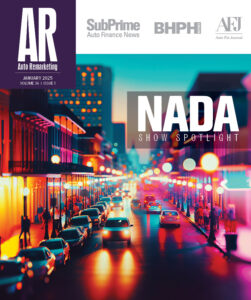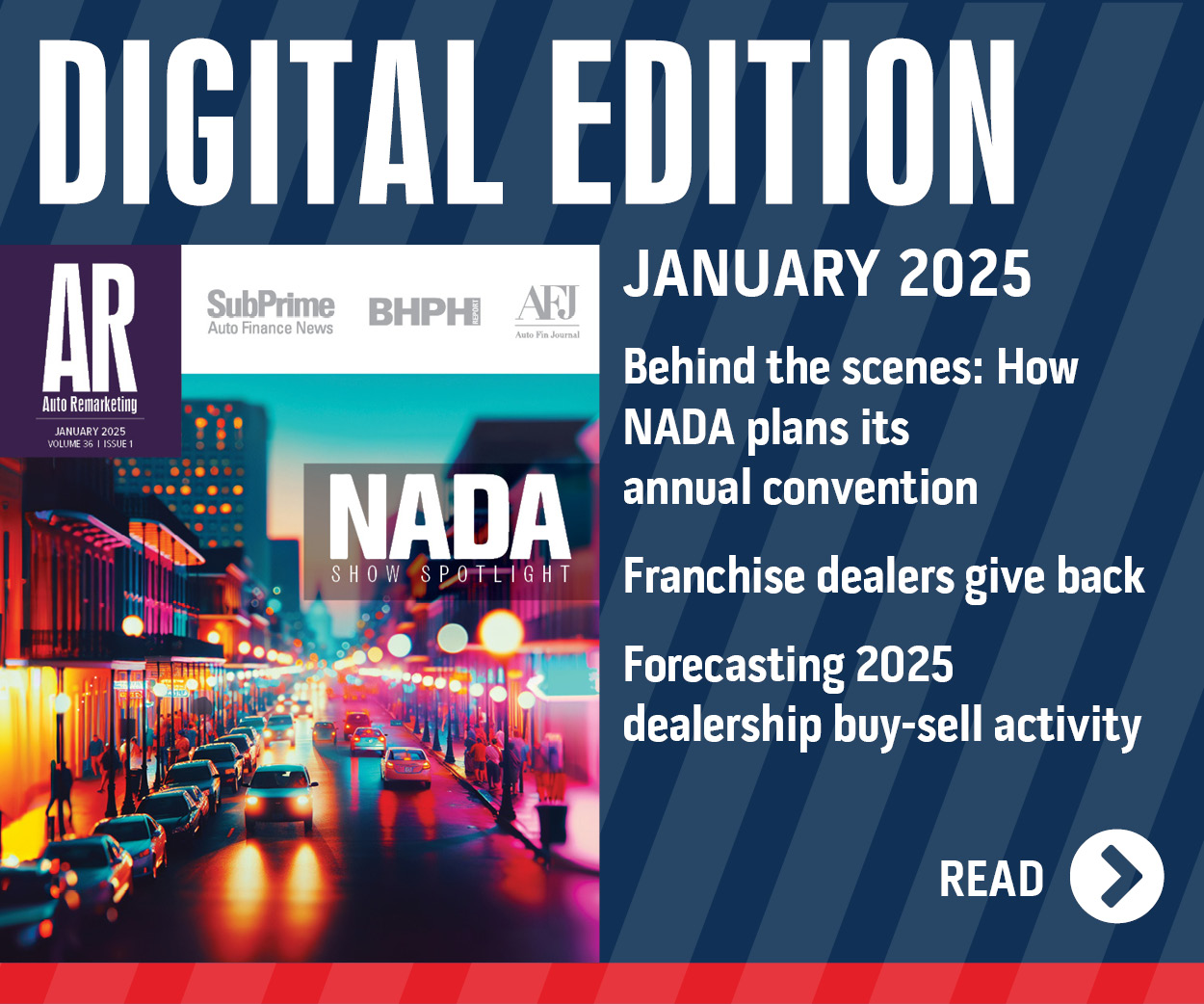CNW Expects November Used Sales Slowdown

Coming off of the best October the used-vehicle industry has seen in four years, CNW Research tried to brace dealers for quite a sales change this month.
Based on the first 15 days of November, president Art Spinella calculated that full-month sales will increase only slightly more than 1 percent versus a year ago.
CNW thinks there will be 2.53 million used sales this month, a total including franchised and independent dealer transactions as well as private-party deals. Last November, there were 2.5 million sales.
“The used industry has been having a field day over the past few months, but the big month-over-month and year-over-year increases are flattening out in November,” Spinella stated in the latest edition of CNW’s Retail Automotive Summary.
“Franchised and independent dealers are likely to see increases below 1 percent while casual sales should rise 2.7 percent,” Spinella added.
October’s used sales came in at 2.91 million units — a 12.11-percent jump from the same month a year earlier. And September marked a year-over-year rise, too, but not quite as great. Still, CNW pointed out the 3.23 million used-vehicle transactions settled 4.6 percent higher than September of last year.
While November’s sales total projected to edge only slightly higher, CNW believes prices for those vehicles likely land flat against the same month last year.
Spinella indicated franchised dealers’ transaction prices this month are running about 2.7 percent behind October but still higher than a year ago.
He added independent stores’ transaction prices are off less than 1 percent versus October but 1.7 percent higher than November of last year.
New Feature: Monthly Segment Prices, Discounts and Incentive Shares
In other news from the company, CNW added a new set of data points that include the previous month’s average sticker price of vehicles sold, average discount, average selling price and the share of incentives (discounts) that are manufacturer funded or out of dealer profits.
Spinella reiterated that manufacturer discounts or incentives include special financing offers, lease programs, additional equipment previously offered as options or rebates. He recapped that dealer discounts include out-of-pocket incentives ranging from “no charge” after-market products (such as extended warranties) to added value (above “book”) trade-in values.
With that in context, CNW discovered that small pickups in October had the highest discount as a share of sticker price than any other segment in the industry at 17.5 percent.
“Manufacturers — attempting to rid themselves of low-profit small pickups and moving customers into the lower-end of the full-size pickup market — had a combined average incentive of $3,524. Dealers added another $1,160 to close sales,” Spinella explained.
On a dollar basis, CNW determined large SUVs showed a whopping $8,769 discount or 16.7 percent of sticker.
“Bringing the total to this level included special lease deals, rebates, finance discounts and customer loyalty spiffs — in many cases with all of those included in each sale,” Spinella noted.
A Look at Share of Sales by Segment
CNW pointed out that the budget car segment had a significant bump in October collecting the largest segment share of total U.S. sales it has had all year.
“New models, replenished inventories and a resurgence in back-to-school vehicle acquisitions for high school and college students drove the higher numbers,” Spinella said.
But CNW found big discounts weren‘t enough to boost the economy car segment.
“Even with more than $2,700 in incentive and discount dollars thrown at these models, market share fell to its lowest level of 2011 at only 11.1 percent, compared to a high-water mark of 14.26 percent in June,” Spinella revealed.
“Discounts did have an impact on small pickups, however,” he continued. “With nearly $4,700 in incentives and dealer cash, the segment had its best month of the year with 2.7 percent of market.”
New and Used Cars Climb on 2012 Purchase Wish Lists
Historically, Spinella said, the annual CNW Wish List Survey has been pretty good at indicating consumer intention trends when it comes to products costing more than $2,500.
“If the outlook based on the Wish List continues to foretell the next year‘s purchase patterns, 2012 should be a good one for the new- and used-car industry,” Spinella predicted.
In the 2005 study measuring intentions for 2006, CNW discovered that buying a new car was ninth on the list of intended big-ticket purchases. In the following years, it fell to 11th and 12th places.
In the just-completed survey for 2012, CNW learned that a new-vehicle wish bounced back to ninth.
“More importantly, the number of key market consumers who say they will buy a new car increased 9 percent over year-ago (levels) to 16.3 percent,” Spinella pointed out.
For used vehicles, CNW believes the picture is equally rosy.
In the 2010 survey for 2011, the firm determined that a used acquisition was ninth on the wish list. For next year: CNW suggested that buying a used vehicle moved a notch upward to eighth with a 20-percent boost in key market intentions.
Of those planning to make a vehicle acquisition, CNW indicated that both new- and used-vehicle intenders expect to budget more for the unit.
New-car intenders are boosting their budget by 2.7 percent; used intenders by 5.6 percent.
“It should be noted, however, that on the new-car side, getting a significant discount is expected by nearly 90 percent of intenders,” Spinella cautioned.
What were the other expenditures that ranked above a new or used vehicle? CNW revealed that, in order, they included a long U.S. vacation, earmarked savings, home electronics, personal investments, upgraded housing, and home furnishings.
Fiat’s Struggles in the U.S.
CNW dedicated a large portion of its latest Retail Automotive Summary to explaining how Fiat is trying to forge its way back into the U.S. market.
“Fiat seems to be struggling with reaching a sales goal that would put it into the mainstream of U.S. brands,” Spinella began.
“Reasons such as engine availability, dealers not yet ramped up and other rationale are all good and proper, but at the heart of the issue is if the recent stumbles are endemic to the brand or simply caused by outside circumstances,” he continued.
CNW noted that the automaker’s 2011 sales peaked in August at 3,106 units and slipped in both September and October. The firm pointed that out its targeted rival, Mini, saw precisely the opposite pattern, reaching a low point in August with only 3,109 sales, or about half of what it had done in the March—April time period.
While the Fiat 500 and the Mini Cooper are in decidedly different price categories, CNW contends the comparison is a natural.
“Both are throw-back designs, profess to be fun vehicles to drive and be seen in, and appeal to an audience that is looking for something a bit different from the vanilla models that make up the bulk of the market,” Spinella acknowledged.
“But the comparison ends there,” he stressed.
CNW noted that even though the 500 is significantly less expensive, the average discount as a share of sticker price in October was twice that of the Mini. The manufacturer incentive dollars were nearly $200 more than BMW‘s incentives on Mini, and dealers had to add a touch more of their own cash to close a deal.
No matter what cash might be on the hood, Spinella pinpointed what he calls “the real rub.” Veteran dealers might remember what he recounted.
“Fiat’s reputation it once had ― ‘Fix It Again, Tony’ — was a common appellation for Fiat in the old days. And it has stuck with those who remember the Fiat models offered in the ’60s and ’70s,” Spinella shared.
CNW backed up Spinella’s claim by indicating only 6.9 percent of those over 50 who would consider a vehicle of this type would have a Fiat 500 on the list, according to its Purchase Path surveys.
The survey showed a third of the same group would consider a Mini or a VW Beetle.
For individuals 35 and younger — another demographic CNW said is key for Fiat — the survey indicated that about 18 percent say they would consider a 500, while 37 percent would consider a Mini.
“More importantly, as Mini has discovered, specialty vehicle makers can’t ignore the over-50 crowd, because that’s where the money is,” Spinella emphasized.
Of those who would consider a Fiat 500, CNW’s survey showed 83 percent could afford the vehicle’s payments. Spinella noted that‘s significantly higher than the 69 percent who could afford the Mini.
“So here’s the problem: Lower consideration among those who could actually afford to make the purchase,” Spinella explained.
“Virtually all new models have growing pains. The Fiat 500 isn’t alone,” he acknowledged. “But specialty models typically surge early in the first year and rely on new variants to continue growing. The ‘gotta-have-one’ crowd is pretty fickle and in terms of overall numbers, not very deep.
“By no means is this early stumble fatal,” Spinella went on to say. “The car is pretty well screwed together, certainly has a personality even though many of the early buyers say it is underpowered. Fiat needs to reevaluate who the market is and make sure the audience of its advertising can actually afford to buy the car.”
Spinella offered more recommendations on how Fiat could turn its fortunes.
“Additionally, it needs to address the historic perceptions of the Fiat brand among older consumers,” he recommended. “But most importantly, it has to become ‘hip to own.’ That’s the key for any specialty vehicle. It was among the problems that Chevrolet faced with the SSR convertible pickup and Ford is currently having with the Flex.
“Can Fiat be fixed? Of course,” Spinella asserted. “But it will take time and a serious effort. And it has to be done quickly enough to keep the interest not only of the public, but the dealer body.”
Do Billboards Generate Consideration?
Moving along, CNW emphasized billboards — either electronic or static images — are still an important marketing strategy to many big name brands.
But the firm questioned how many new-vehicle intenders said that the ad “spoke” to them and made them decide to put that brand on their shopping list
Among potential new-vehicle surveyed, CNW indicated that 8.16 percent said a static billboard was responsible for adding a brand to their shopping list. About 12 percent revealed they would add the name to purchase options after viewing an electronic billboard.
Also among those potential buyers, CNW found that 8.9 percent said they already had a brand on their shopping list and a static billboard encouraged greater consideration of that brand.
“For dealers who use outdoor advertising, the percentages were equally encouraging. Better than a quarter said an electronic billboard encouraged consideration of a particular dealership,” Spinella shared.

 View The Latest Edition
View The Latest Edition

